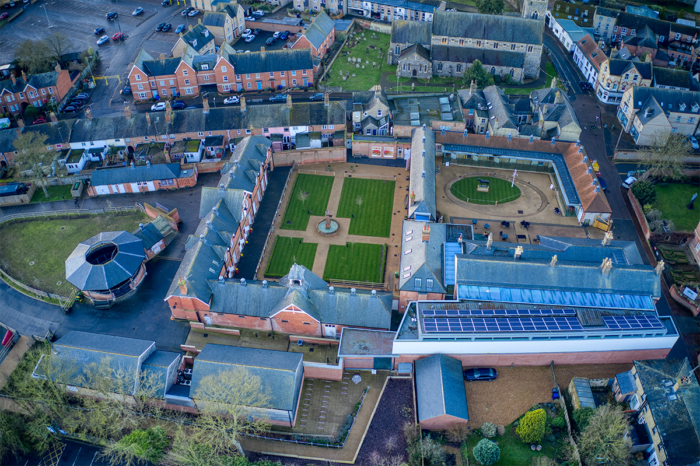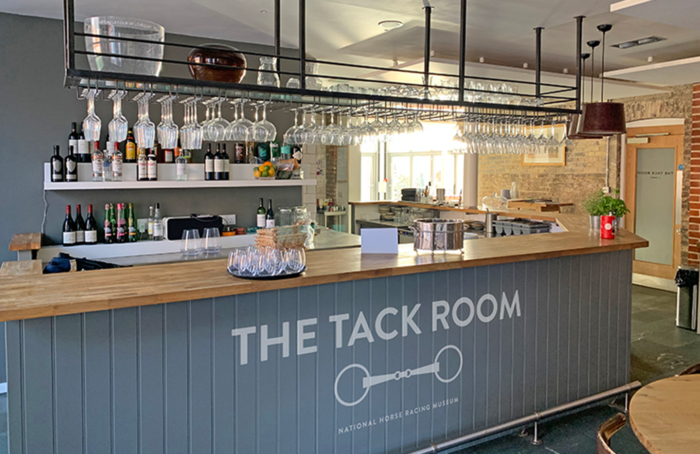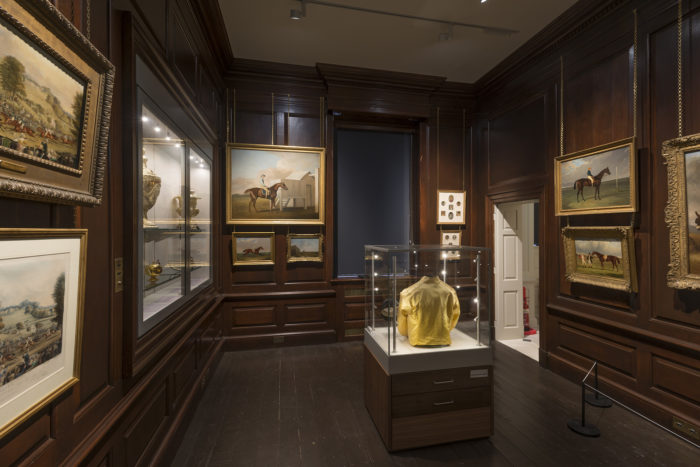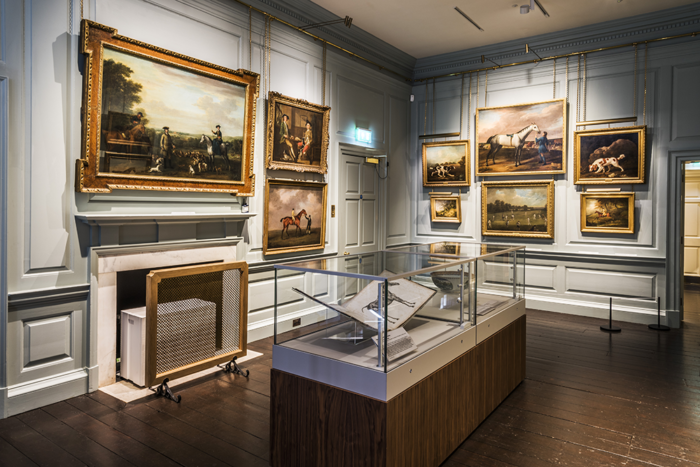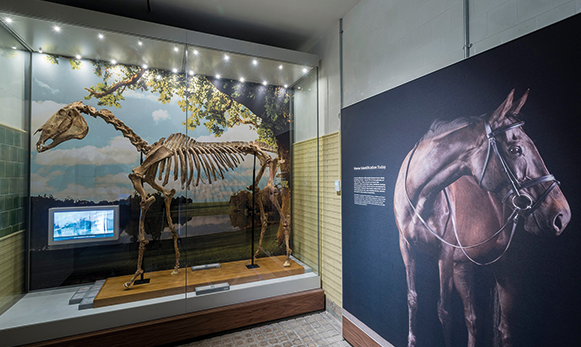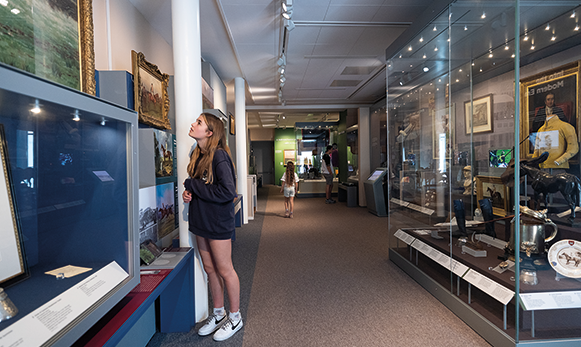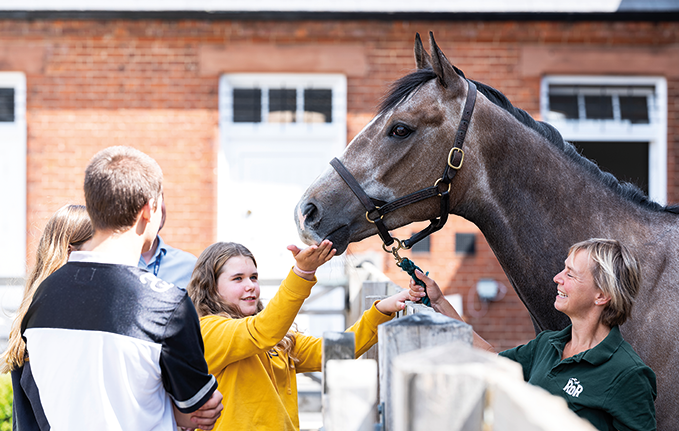The National Heritage Centre has gone from a dream to a drawing and then a full-scale project – it can only have got so far thanks to terrific support from a huge range of people and organisations who all recognise the importance of Newmarket as the international centre for horseracing.
NHRM and its place in Newmarket's history
Since 1983 the National Horseracing Museum has celebrated Newmarket’s status as the historic home of horse racing.
This 350-year-old relationship is explored through stunning works of art, contemporary sculptures, breathtaking architecture, through to equine science, some of the world’s most famous racing trophies and unique bronzes and artefacts. Using the latest interactive and audiovisual displays, the museum also takes a different look at the Sport of Kings, examining the physical attributes of the elite equine athlete and the importance of the thoroughbred pedigree.
The economic contribution of horseracing to the UK economy alone is estimated to be about £3.5billion, with over 85,000 jobs supported by the industry.
Explore more about the fascinating history of the National Horseracing Museum by using the arrows to click through our slideshow images.
Book your visit today to further explore an exciting attraction steeped in history, and meet our equine residents.
The early days of the Museum
The National Horseracing Museum was officially opened on 30th April 1983 by Her Majesty The Queen.
The museum originally occupied the building that was once known as the Subscription Rooms of the Jockey Club, located in Newmarket High Street. In the mid 19th century, the rooms were used as a location by the betting men to meet after racing before becoming a social club as betting on horses became more widespread.
In 1981, the rooms closed and the ideal opportunity for a national museum for racing came about, long envisaged by Major David Swannell, a prominent and highly respected Jockey Club Handicapper.
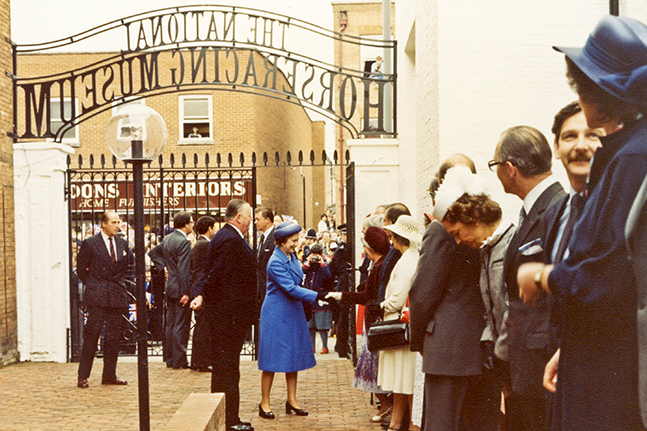
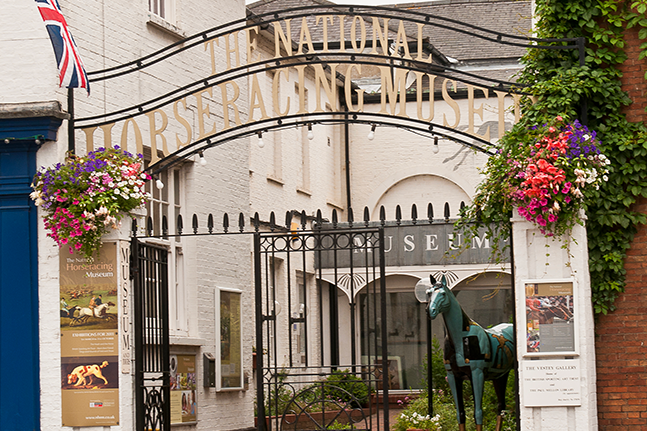
The restoration project of Palace House Estate
In 1992, Forest Heath District Council (FHDC), with the support of English Heritage, bought Palace House as concern grew over the inappropriate development of the Grade II* listed building. The Palace House Estate occupies the last remaining part of King Charles II’s sporting palace and stables. The building had got into a perilous state having been unsympathetically rendered in cement.
Three charities – the National Horseracing Museum, the British Sporting Art Trust, and the Retraining of Racehorses charity – have combined to bring this historic site back to life.
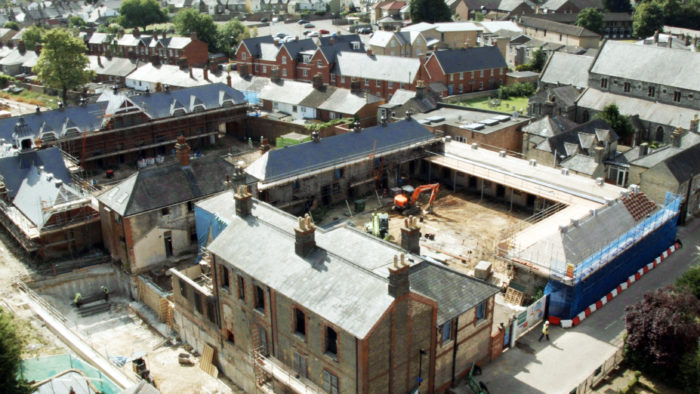
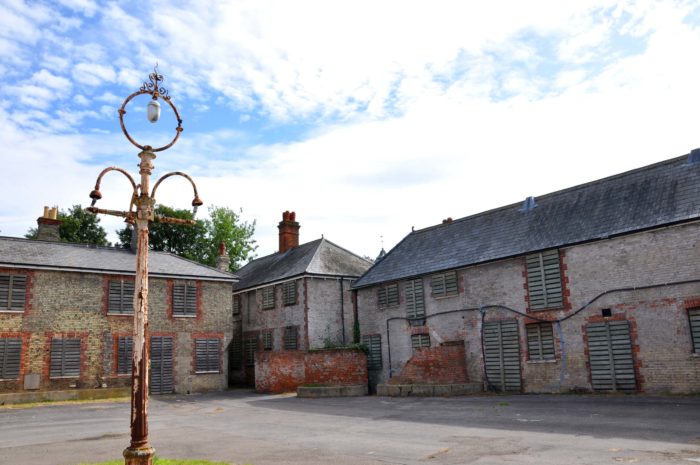
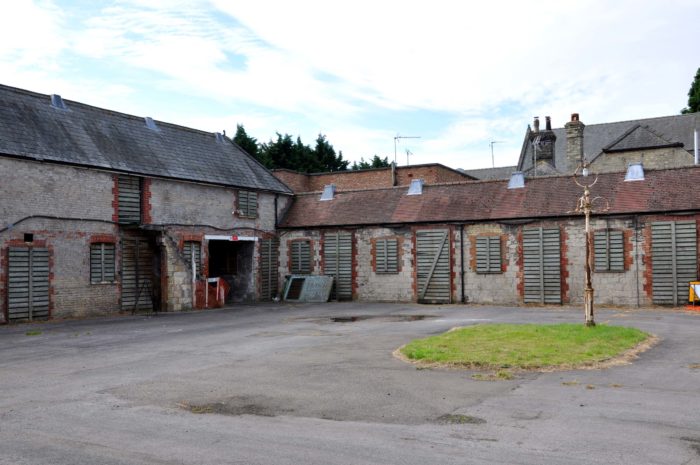
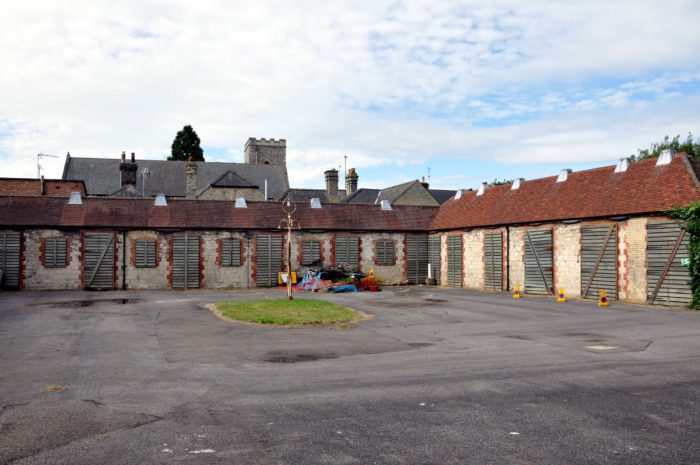
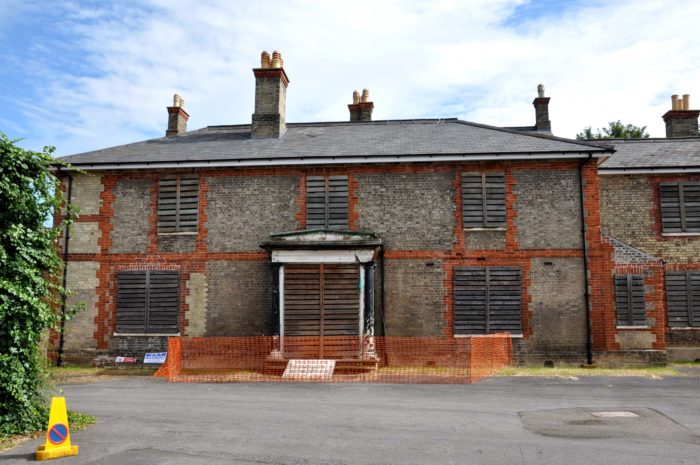
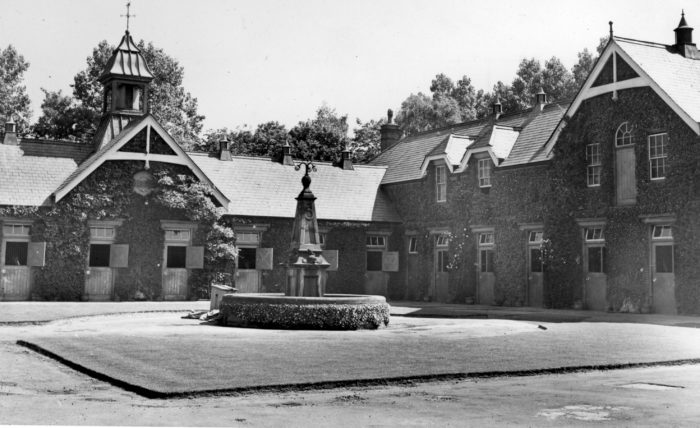
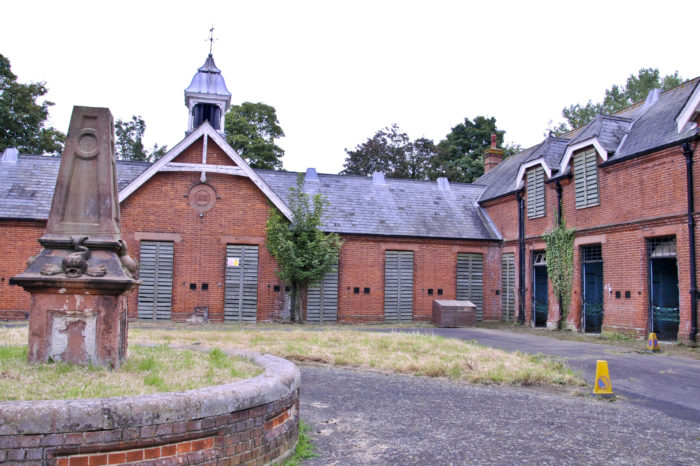
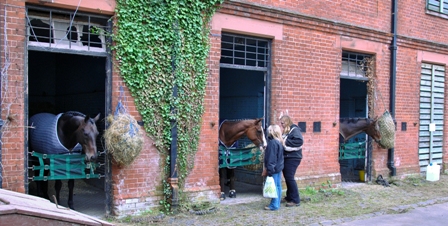
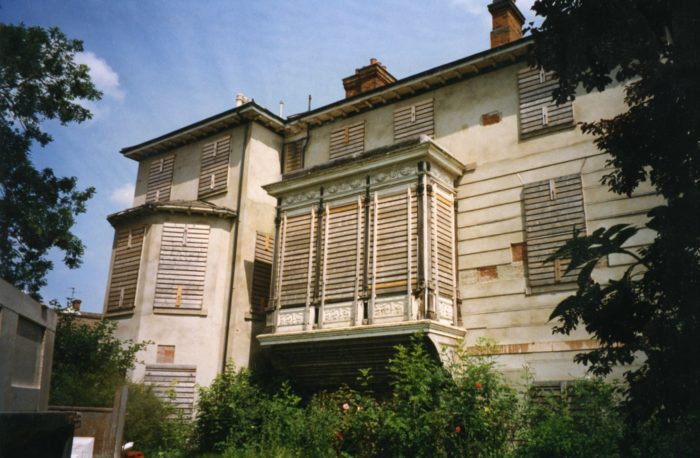
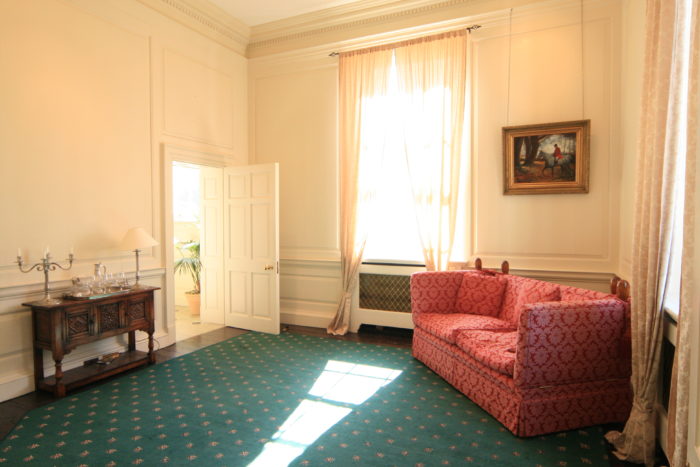
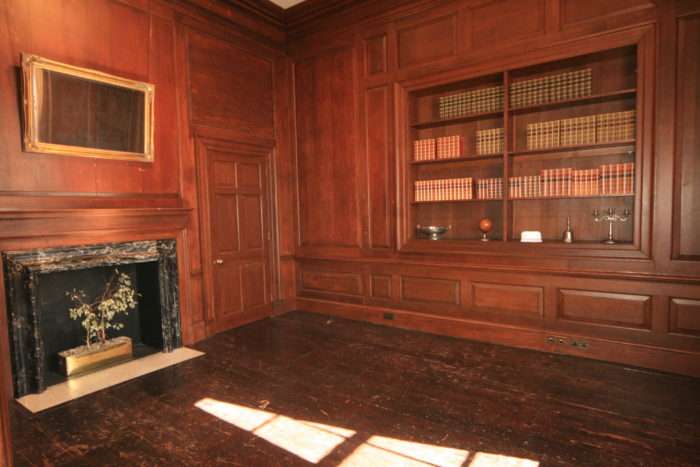
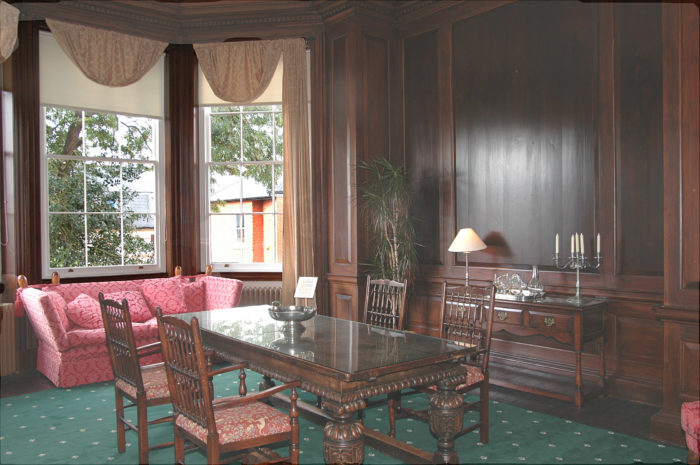
The official re-opening by Her Majesty The Queen
After 11 years of hard work, in 2016, the new museum moved to the restored Palace House Estate which occupies the remains of Charles II sporting palace.
On 3rd November 2016, Her Majesty The Queen officially opened the new site, 33 years after opening the original museum. The move allowed the museum to expand dramatically, allowing the creation of three separate attractions: the National Horseracing Museum in the Trainer’s House and King’s Yard Galleries, Packard Galleries of British Sporting Art in Palace House, and a chance to meet former racehorses in the flagship home of Retraining of Racehorses, in the Rothschild Yard.






Sign up today to find out about our latest news and offers
NHRM Today & the Future
Today, NHRM celebrates the town’s status as a historic home of horseracing and sporting art.
Supported by the Heritage Lottery Fund, Forest Heath District Council, Suffolk County Council, the Racing Industry (including the Jockey Club, Tattersalls, Weatherbys, and the Racing Foundation) as well as many private trusts, foundations, and individuals from the world of horseracing and beyond, the project is an important partnership between the public and private sectors.
NB: The National Horseracing Museum has previously been known under the following names: National Heritage Centre, Palace House Newmarket, Palace House Estate and Newmarket Horse Museum.
